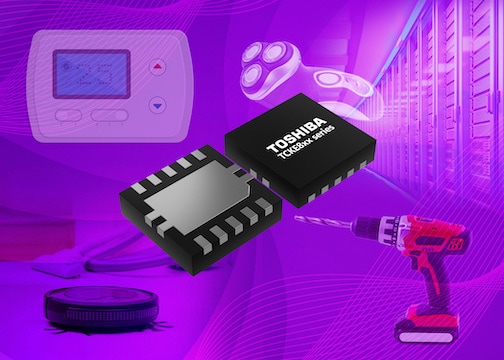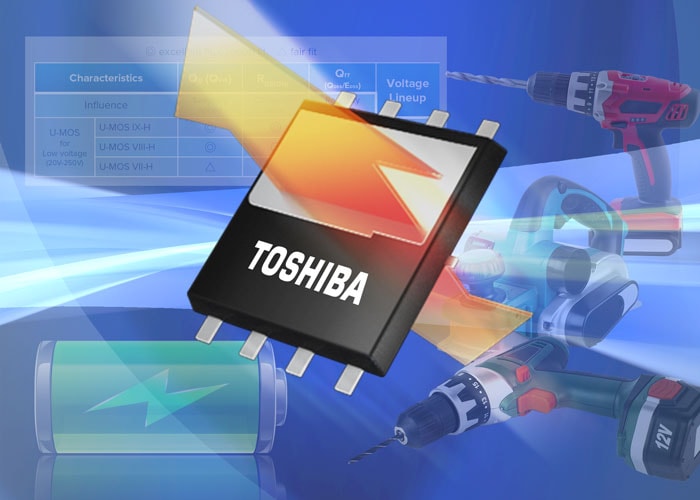- General Top
- SEMICONDUCTOR
- STORAGE
- COMPANY
-
My ToshibaSemicon
- Semiconductor Top
-
ApplicationsAutomotive
Body Electronics
xEV
In-Vehicle Infotainment
Advanced Driver-Assistance Systems (ADAS)
Chassis
IndustrialInfrastructure
BEMS/HEMS
Factory Automation
Commercial Equipment
Consumer/PersonalIoT Equipment
Healthcare
Wearable Device
Mobile
Computer Peripherals
-
ProductsAutomotive Devices
Discrete Semiconductor
Diodes
Transistors
Logic ICs
Analog Devices
Digital Devices
Wireless Devices
※
: Products list (parametric search)
Power SemiconductorsSiC Power Devices
※
: Products list (parametric search)
Isolators/Solid State RelaysPhotocouplers
Digital Isolators
Solid State Relays
Fiber Optic Transmitting Modules
※
: Products list (parametric search)
MOSFETsIGBTs/IEGTsBipolar Transistors※
: Products list (parametric search)
Diodes※
: Products list (parametric search)
MicrocontrollersMotor Driver ICsIntelligent Power ICs※
: Products list (parametric search)
Power Management ICsLinear ICs※
: Products list (parametric search)
General Purpose Logic ICsLinear Image SensorsOther Product ICsOther Product ICs
※
: Products list (parametric search)
-
Design & Development
Design & Development
Innovation Centre
At the Toshiba Innovation Centre we constantly strive to inspire you with our technologies and solutions. Discover how to place us at the heart of your innovations.
-
Knowledge
Knowledge
Highlighted Topics
Further Materials
Other
- Where To Buy
- Part Number & Keyword Search
- Cross Reference Search
- Parametric Search
- Stock Check & Purchase
This webpage doesn't work with Internet Explorer. Please use the latest version of Google Chrome, Microsoft Edge, Mozilla Firefox or Safari.
require 3 characters or more. Search for multiple part numbers fromhere.
The information presented in this cross reference is based on TOSHIBA's selection criteria and should be treated as a suggestion only. Please carefully review the latest versions of all relevant information on the TOSHIBA products, including without limitation data sheets and validate all operating parameters of the TOSHIBA products to ensure that the suggested TOSHIBA products are truly compatible with your design and application.Please note that this cross reference is based on TOSHIBA's estimate of compatibility with other manufacturers' products, based on other manufacturers' published data, at the time the data was collected.TOSHIBA is not responsible for any incorrect or incomplete information. Information is subject to change at any time without notice.
require 3 characters or more.
Facilitating Servo Drive Development in Robots and AGVs

Going back many generations, our society seems to find the subject of robotics unusually enthralling. Rudimentary automatons have been around since before the Renaissance, becoming increasingly popular during the 18th and 19th centuries and also more complex in their design.
From idea…
In more modern times, robotics has proved a valuable source of inspiration to countless writers and filmmakers. It was the novelist and playwright Karel Čapek who initially used the term ‘robot’, in his work ‘Rossumovi Univerzální Roboti’, back in 1921, meaning in his native Czech tongue ‘forced labour’. Six years later, German director Fritz Lang’s much-celebrated silent movie ‘Metropolis’ was the first in which a robot would appear (in the guise of a female android called Maria). During the mid-1940s, science fiction visionary Isaac Asimov set out the Laws of Robotics, which most notably stated that a robot could never harm a human. This is something that has been completely ignored in an array of Hollywood movies since - including by Yul Brynner’s android gunfighter character in ‘Westworld’, Rutger Hauer’s menacing replicant in ‘Blade Runner’ and Arnold Schwarzenegger’s cyborg assassin in ‘Terminator’.
… to reality
As time has moved on, robotics popularity in fiction has been matched (and possibly even surpassed) by fact with an increasing number of real-world applications. The form that these robots take is changing too. No longer are they just the bulky items that are deployed on manufacturing production lines (and kept in isolation from humans). Now they are being designed to interact with us and to assist us on the tasks we are doing. In recent years this has led to the emergence of collaborative robots or ‘cobots’ within certain working environments, as well as autonomous guided vehicles (AGVs) to carry out deliveries and take care of materials handling duties.
Design speed with modular development platform
The servos incorporated into a robot or AGV are of paramount importance, as it is through these that the unit’s movements are initiated. These are driven by electric motors, either stepper or brushless DC (BLDC). An effective motor control algorithm is needed to accompany such motors, and this should enable elevated levels of power efficiency to be delivered (so as to make the independence of the robot/AGV unit greater, and ensure it is not restricted by the need for battery recharges on too regular a basis). The algorithm should allow power delivery to the motors to be maximised and curb the losses resulting from unwanted heat generation. Precise control of the numerous motors involved (covering robotic movement in different axes, etc.) will call for the acquisition of accurate positioning data in relation to each individual motor rotor. Often facing challenges including short deadlines, stretched resources and in many cases limited relevant expertise, engineers want to avoid having to do a lot of this work from scratch. What they need instead is the support of a flexible, modular development platform.
To offload the pressures placed on engineering teams and give them the head start they need in developing motor systems for their robot/AGV projects, Toshiba offers a highly flexible and simple to utilise solution. Its game-changing Servo Drive Reference Model encompasses all the essential elements of robotics-oriented motor control - the controller, the power delivery, the feedback loop, etc. The microcontroller at the heart of this reference model features an Arm® Cortex® processing core capable of running at 160MHz.
Toshiba has put together a whitepaper on robotic servo drives, which includes details of its reference model. Download it from here:




